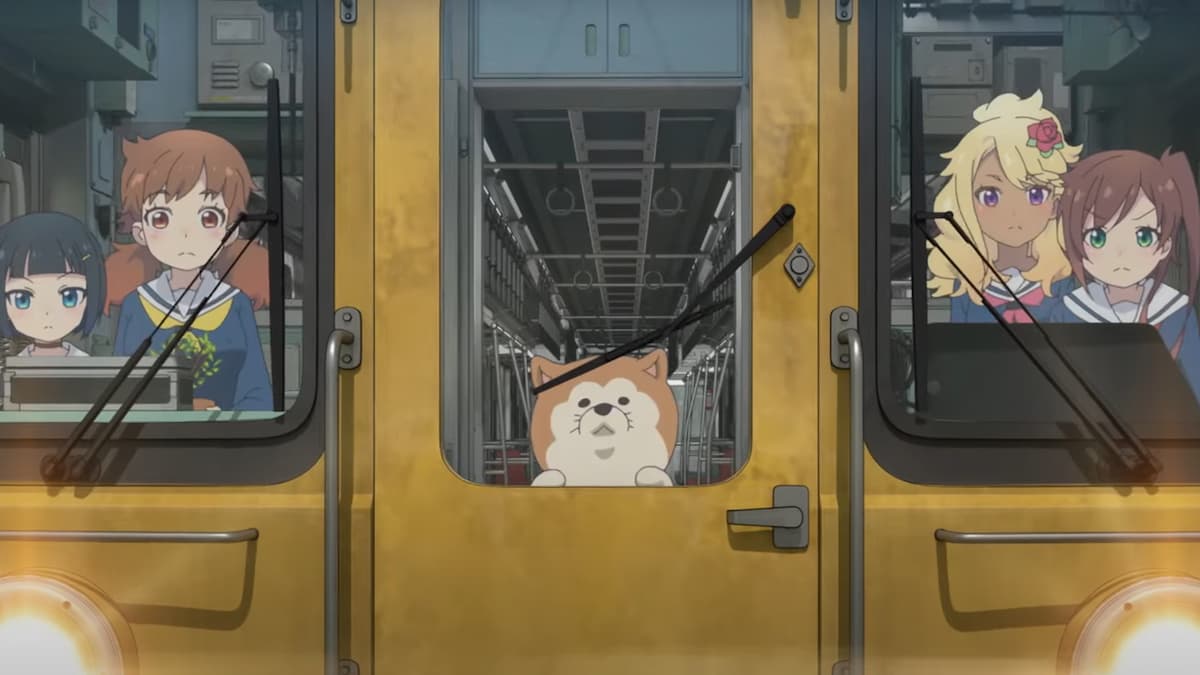Don’t Miss the Best Anime From the Spring Season That You Didn’t Watch

Video game auteur Hideo Kojima is widely considered A Man of Taste, so I’m always intrigued by his recommendations—very much including his post on X/Twitter that he was watching one of the more “obscure” anime of the spring 2024 season: Train to the End of the World.
I waited until the end of the season and watched Train to the End of the World, front to back, over the course of a week. It’s one of the most refreshing anime series I’ve seen in a long time.
The premise of Train alone is deeply intriguing. The title is kind of a misnomer. In the opening moments of the show, a scumbag businessman immaculately named Poison Pontaro pushes forward with a dumb publicity stunt to enact his plan to make Japan the first country to adopt “7G.” As in, a network for cellular devices. If you’re keeping track, we’re currently on 5G.
Unfortunately, 7G distorts the entire world, with different bizarre consequences in every town. Two years later, the show follows a group of high school girls traveling by train to Ikebukuro, where “The 7G Incident” took place, to find a friend who had gone missing.
To describe what bizarre, self-contained town-worlds they encounter on their journey feels like spoilers. But suffice it to say that the result is a solid mix of dark and absurd, with the frayed friendship between Shuzuru and the missing Yoka as the emotional core.
The 7G incident
Train to the End of the World can stay grounded because of how it grapples with teenage friendships—the nasty things we can say to each other, the ways in which we have to grow in order to own up to our mistakes. But it’s also the kind of show where the hot guy guiding the girls on their journey to Ikebukuro can only speak for five minutes before he turns into a slouched-over old man who can only say, “Bobobobobobobo.“
Granted, the level of absurdism isn’t for everyone. In episode 8, the girls wind up in a town that has transformed into an in-world famous anime that our core characters all know very well. The show never goes out of its way to make sure we’re on their page. The result proved divisive (RIP the Crunchyroll comments section). It was incomprehensible, but also incomprehensible on purpose—which even if you don’t like the end result, you have to admit takes guts to try.
There are some cringe moments, though. There’s an unfortunate makeup decision when the girls decide to try to blend in with zombies that might hit with American viewers a certain way. One of the characters of the in-world anime also seems to make light of suicide in a way I did not love.
That being said, a huge part of the charm of Train is also that, for as fantastical as it is, it’s also deeply local. The girls are specifically following the Seibu Ikebukuro line, which starts in their hometown of Agano (which is not even in Tokyo prefecture, but neighboring Saitama) and goes 31 stops to Ikebukuro. The Seibu Ikebukuro line isn’t a line typically used by tourists—it’s very much for commuting and local use. To me, that deeply adds to the charm of the show.
It’s also beautiful. The post-apocalyptic landscapes can be gorgeous, inventive, and/or downright terrifying.
If anything, Train could have benefitted from more time. It’s an anime-original idea that closes out after 12 episodes. On one hand, those are kind of a rarity nowadays, so a brisk watch is welcome. On the other hand, I would’ve loved to see more of the 31 stops and to spend more time digging into every character. I grew deeply attached to Akira, the now-it-all bookworm of the group. I want more Akira.
But at the end of the day, what makes Train to the End of the World intriguing is that it’s the kind of show where you can tell the people making it threw their wildest ideas at the wall and played around with them. There’s risk and experimentation in hefty measure—it’s not a “safe” show. So while the show overall has flaws, it’s of a rare enough breed that it’s deeply worth a watch.
Have a tip we should know? tips@themarysue.com